Reptile & Amphibian
News Blog
Keep up with news and features of interest to the reptile and amphibian community on the kingsnake.com blog. We cover breaking stories from the mainstream and scientific media, user-submitted photos and videos, and feature articles and photos by Jeff Barringer, Richard Bartlett, and other herpetologists and herpetoculturists.
Wednesday, April 30 2014
You don't normally think Burmese pythons when you hear about therapy animals helping kids, but that's just what they're doing at Nova’s Ark in Brooklin, Ont.
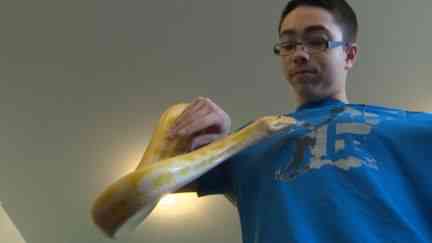
Read about it here.
Photo: MSN Canada
It's our herp photo of the day, uploaded by kingsnake.com user 1Sun!

Upload your own reptile and amphibian photos photos at gallery.kingsnake.com, and you could see them featured here!
Tuesday, April 29 2014
The lament from an old country song ,"You slip through my fingers just like quicksilver," describes the most unusual-appearing of the American skinks perfectly.
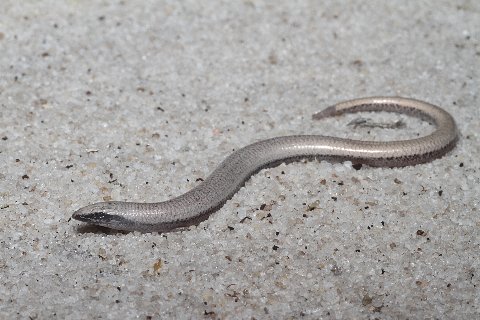
Long placed in the monotypic genus Neoseps, the Florida sand skink is now known as Plestiodon reynoldsi. This fossorial skink is highly specialized for a life of burrowing in the sugar-sand locales (often low dunes) of central Florida.
Although four limbs are present, they are tiny. The forefeet bear only a single toe each and the slightly larger rear limbs bear two toes each.
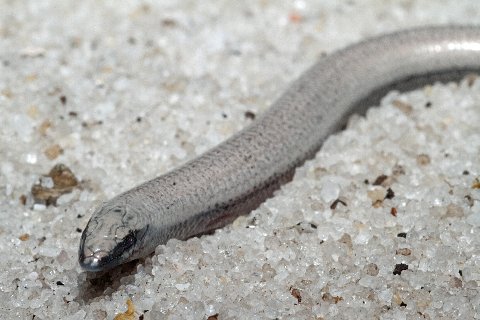
The eyes are small and the lower eyelids each have a transparent "window." Despite the very real limb-size reduction, this silvery 3-1/2 to 5 inch long lizard is alert, remarkably agile, and very difficult to hold.
Whether found by accident or as the result of a concerted effort its response to the light is immediate and decisive: it dives headfirst into the sugar-sand and within a fraction of a second has disappeared into the substrate for which it is so very well-adapted -- and named.
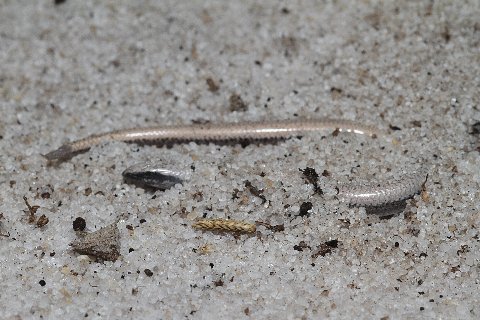
It's our herp photo of the day, uploaded by kingsnake.com user uggleedog!

Upload your own reptile and amphibian photos photos at gallery.kingsnake.com, and you could see them featured here!
Monday, April 28 2014
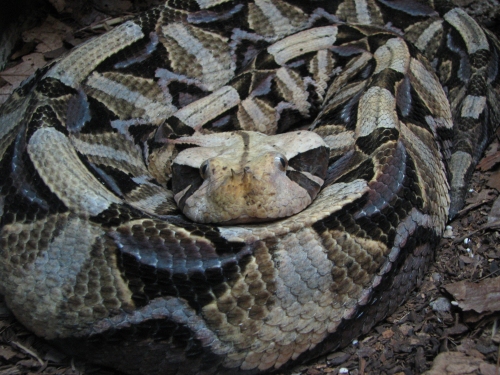 Now, see, this is what we mean when we say "decent media reporting about snakes where the reporter actually takes a few minutes to do his or her job," which is something we don't get to say much.
Sadly.
So thank you, Brian Hicks, of the Post and Courier, for pointing out that the media frenzy over the Gaboon viper threatening a small South Carolina town is probably based on... absolutely nothing.
Read it here.
Photo: Wikicommons, released to public domain
It's our herp photo of the day, uploaded by kingsnake.com user amcroyals!

Upload your own reptile and amphibian photos photos at gallery.kingsnake.com, and you could see them featured here!
Friday, April 25 2014
Check out this video "Boa on a stroll," submitted by kingsnake.com user Minuet.
Submit your own reptile & amphibian videos at http://www.kingsnake.com/video/ and you could see them featured here or check out all the videos submitted by other users!
This image of a Pixie Frog, uploaded by kingsnake.com user FrogUs, is our herp photo of the day!

Upload your own reptile and amphibian photos photos at gallery.kingsnake.com, and you could see them featured here!
Thursday, April 24 2014
Along the side of the road that had traversed the driest-appearing of desert lands, a small sign proclaimed the presence of a spring.
A widened parking spot beckoned us to stop for a few moments and stretch our legs. We found the little spring, and, while limbering up from the long drive, checked the area over carefully for herps and birds to photograph.
We found little, but as it turned out, a most impressive find found us. We were standing next to a treefall when a fleeting movement among the broken limbs caught our eye. Whatever had made the motion had disappeared again and we had no idea of what the perpetrator was.
That we decided to stand quietly for a few more minutes proved a wise decision. After about five minutes we noted more motion, this about 3 feet away from the initial occurrence. And as we watched a shiny tan lizard head pushed above the twigs and a beady eye watched us intently.
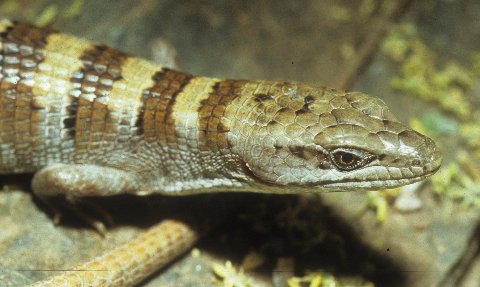
We remained as motionless as possible and a minute or two later the lizard felt secure enough to emerge a little further. Following an elapse of another several minutes the lizard was finally lying fully in a patch of sun. And a rarely seen lizard it was. By accident we had happened into the habitat of the beautiful Panamint alligator Lizard, Elgaria panamintina, just as one lizard had become active for the day.
And to make the sighting even more memorable, the lizard appeared to be a gravid female! Now that's luck!
More photos under the jump...
 Nothing must ever happen in South Carolina, given the insane levels of hype over a supposed stray Gaboon viper roaming its streets. So with all that free time and dearth of current events to report on, you'd think the media could, you know... investigate? Or maybe just hit Wikipedia? Anything other than what they've been doing.
From the Charleston Post Courier:
Michelle Reid, of Animal Rescue and Relief, removed the traps and gear Monday after learning that the nearest any antivenin can be found is Africa, and the antivenin can't be brought to the United States until the Federal Food and Drug Administration approves it. She is trying to get that approval.
We thought this seemed implausible, so we checked with Jim Harrison over at the Kentucky Reptile Zoo. This is what he had to say:
Unfortunately, the media did no research on the subject. At the very least, two facilities carry South Africa polyvalent antivenin . They are Riverbanks Zoo and Alligator Adventure. We at Kentucky Reptile Zoo have over 30 vials at the moment of the antivenin. Further more, their experts are lacking as well with their information on trapping as well as the natural history of the Gaboon. It appears they may have spent their time watching Animal Planet rather than researching the real husbandry of the the species.
There's a few facts for you, South Carolina media. You're welcome.
Photo: Wikicommons, released to public domain
It's our herp photo of the day, uploaded by kingsnake.com user motorhead!

Upload your own reptile and amphibian photos photos at gallery.kingsnake.com, and you could see them featured here!
Wednesday, April 23 2014
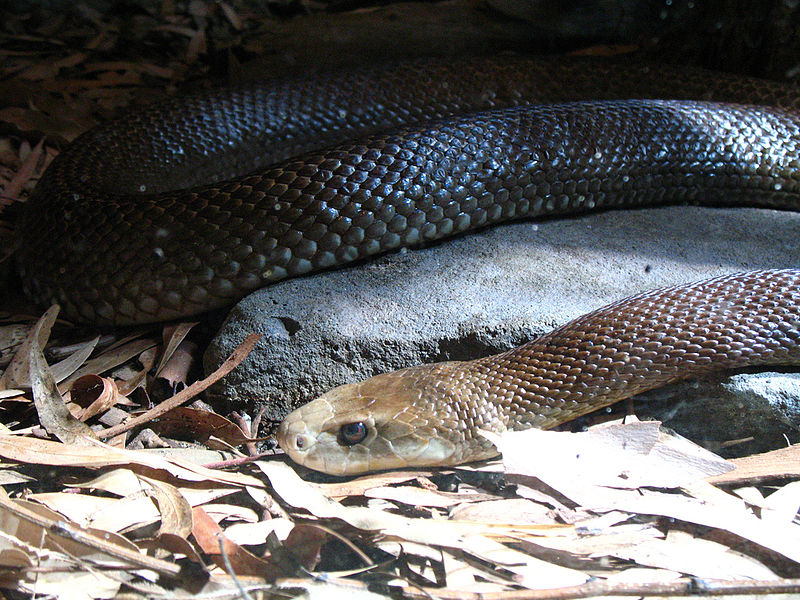 Venom from Australian snakes is helping save human lives. Seriously ill patients are benefiting from shorter turnaround time on critical blood tests, thanks to the coastal taipan ( Oxyuranus scutellatus) and the Eastern brown snake ( Pseudonaja textilis).
From ABC Australia:
The bites of eastern brown snakes and coastal taipans are dangerous because their venom causes a victim's blood to coagulate.
Researchers at the University of Queensland have pioneered a way to use snake venom to speed up the processing of blood tests of patients who have been given anti-coagulants.
Dr Goce Dimeski says tubes infused with snake venom are producing faster and more accurate results.
"From a clinical perspective, results will be available in a shorter time," he said.
"There's a potential to decrease the length of stay for patients, increase patient throughput and in the end could lead to saving lives."
Read more...
Photo: Denise Chan/Used under the Creative Commons Attribution-Share Alike 2.0 Generic license.
This image of a Ball Python, uploaded by kingsnake.com user KE, is our herp photo of the day!

Upload your own reptile and amphibian photos photos at gallery.kingsnake.com, and you could see them featured here!
Tuesday, April 22 2014
A half dozen intrepid explorers walked a narrow forest trail on Madre Selva Preserve in Amazonian Peru, each apparently stepping over a patch of leaves on the trail. They walked a few hundred yards beyond, then turned and retraced their steps.
As they neared the bit of leaf cover on the return trek, the head of a small snake was seen protruding from beneath the leaves. Carefully collecting the snake, they brought with them to the field station the only pygmy black-backed coral snake, Leptomicrurus scutiventris, we have yet seen there.
The snake was photographed and released exactly where it had been found -- note that a single ring of yellow on the head and one or two rings of orange on the tail are the normal pattern for this snake:
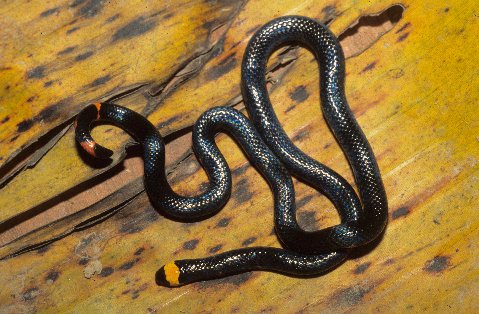
This species attains a length of about 18 inches but is usually smaller. Remaining is the question of whether this tiny elapine snake is actually rare or merely secretive? But for those of you who believe the red to yellow rhyme (red to yellow, kill a fellow; red to black, venom lack) infallible, take note. This is just one of the many neotropical coral snakes to which the familiar ditty does not apply.
More photos under the jump...
A fire in a Savannah Reptiles Planet warehouse in France killed between 20,000 and 30,000 reptiles and another animals.

From Prensa Latina:
The flames destroyed around 4,000 square meters of the facility and killed a large number of snakes, iguanas, chameleons, lizards, amphibians, rabbits, rats, and insects.
Only eight turtles, between 60 and 100 kilograms, were saved, when rescuers poured water on their shells.
Read more...
Image: France TV
This image of a Chondro, uploaded by kingsnake.com user NYCMedic, is our herp photo of the day!

Upload your own reptile and amphibian photos photos at gallery.kingsnake.com, and you could see them featured here!
Monday, April 21 2014
There's a pretty flipping cool photo spread of crocs in nature in the UK's Metro. See it here.
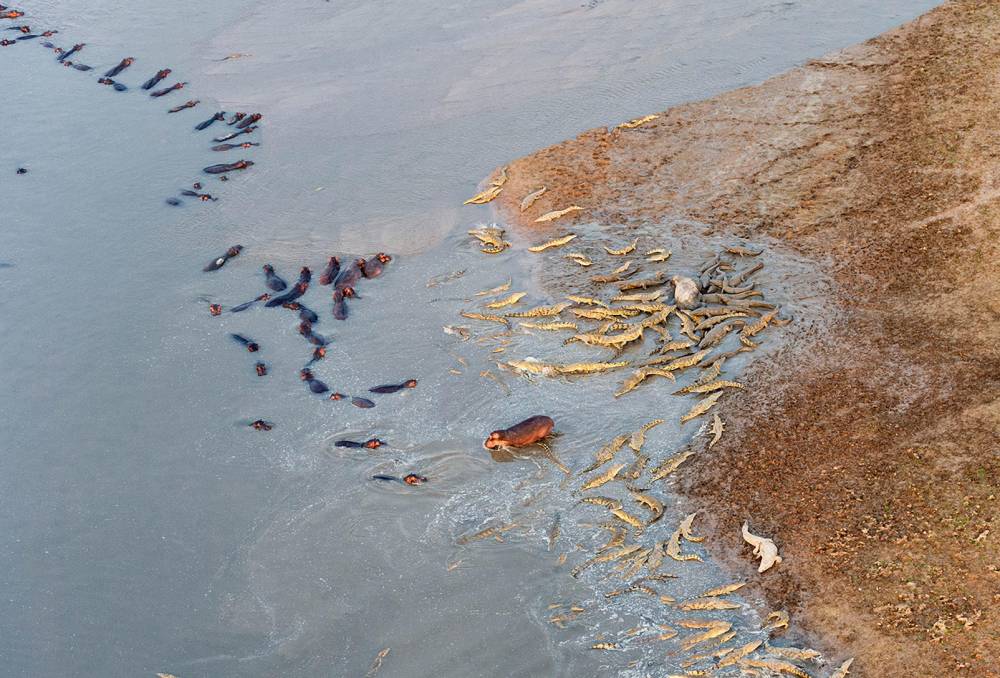
You're welcome.
This image of a Leaf-Tailed Gecko, uploaded by kingsnake.com user zmarchetti, is our herp photo of the day!

Upload your own reptile and amphibian photos photos at gallery.kingsnake.com, and you could see them featured here!
Friday, April 18 2014
Check out this video "Bearded Dragon VS Superworms," submitted by kingsnake.com user Minuet.
Submit your own reptile & amphibian videos at http://www.kingsnake.com/video/ and you could see them featured here or check out all the videos submitted by other users!
This image of a Scarlet King, uploaded by kingsnake.com user caecilianman02, is our herp photo of the day!

Upload your own reptile and amphibian photos photos at gallery.kingsnake.com, and you could see them featured here!
Thursday, April 17 2014
We've heard of snow days... but snake days?
A high school in Kyrgyzstan was closed down after they found at least 30 snakes in the building every day this spring. No ID was made of the types of snake, but media speculation has ranged all over the place, including the Caspian cobra, Naja oxiana.
 Read more...
Photo: Omid Mozaffari, licensed under the Creative Commons Attribution-Share Alike 3.0 Unported license.
Read more...
Photo: Omid Mozaffari, licensed under the Creative Commons Attribution-Share Alike 3.0 Unported license.
This image of Bearded Dragons, uploaded by kingsnake.com user dedragons, is our herp photo of the day!

Upload your own reptile and amphibian photos photos at gallery.kingsnake.com, and you could see them featured here!
Wednesday, April 16 2014
What if there was a disease that killed or crippled hundreds of thousands of people every year, but no one seemed to care?
It's not a disease, but as Dr. Matthew Lewin wrote in the New York Times Sunday Review last weekend, snakebites kill 94,000 people and cripple 400,000, mostly in impoverished parts of the world.

So where are the telethons, the philanthropic dollars? Where are new developments other than costly, mostly unavailable anitvenin? How about drugs, or a snakebite EpiPen?
Find out...
Photo: Naja annulifera by kingsnake.com user Neverscared
This image of a Garter Snake, uploaded by kingsnake.com user clayemt, is our herp photo of the day!

Upload your own reptile and amphibian photos photos at gallery.kingsnake.com, and you could see them featured here!
Tuesday, April 15 2014
There are times that things are not at all as they initially seem. For example, there was that night when I was moving slowly from bridge to bridge along a small creek on Madre Selva Preserve in Amazonian Per looking intently for aquatic coral snakes. Usually common, this coral was proving difficult to find on this trip.
While I was studying the bottom of a shallow pool, a large fallen leaf began moving slowly away. My interest quickly changed from coral snake to the "moving leaf." The water was silted and the moving object was further obscured by fallen leaves. But it took only a few moments for recognition to occur.
Well-camouflaged though it was, I was looking at a common Suriname toad, Pipa pipa. And that one sighting had turned what had been a rather slow herping trek into a memorable stroll.
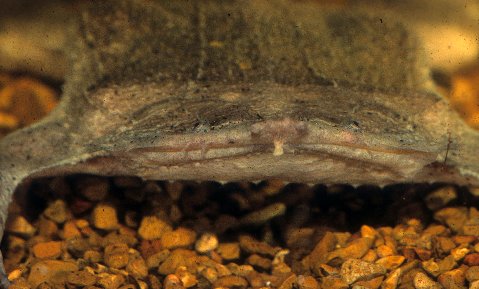
Suriname toad facts:
This anuran is a member of the family Pipidae, the tongueless frogs.
The eyes are small and lidless.
The fingers are tipped with tactile skin flanges and prey is literally shoveled into the tongueless mouth with the forefeet.
After a complex breeding sequence the eggs are placed on the female's back and are soon covered by skin.
The eggs undergo full development while being carried by the female. At hatching the toadlets are fully metamorphosed miniatures of the adult.
This species is fully aquatic.
More photos under the jump...
Did you hear the one about the man who got out of his car to get a closer look at an alligator... and got bitten by a water moccasin?
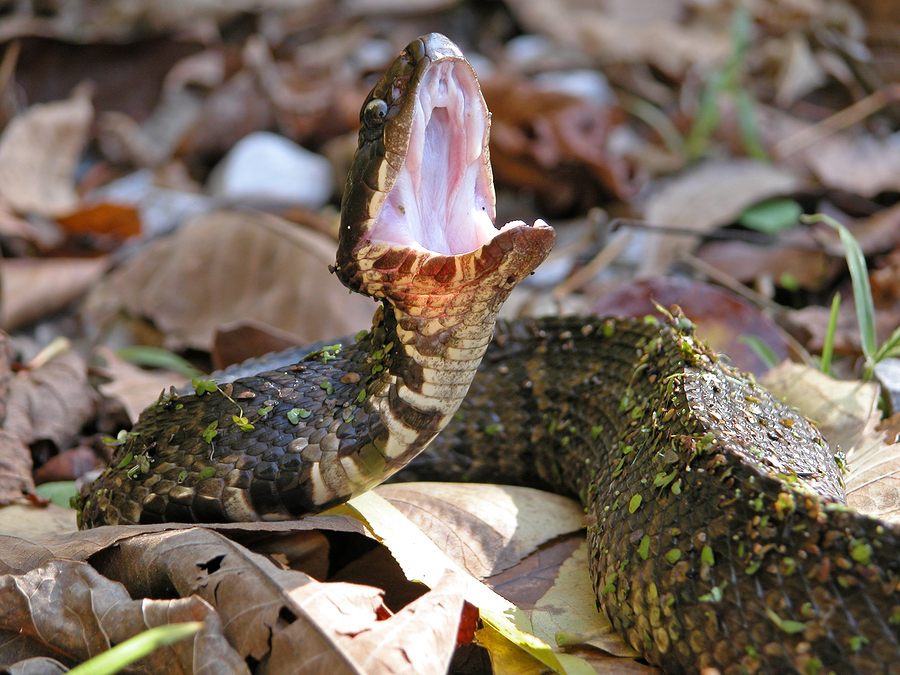
No, it's not a joke. It's a true story from WTSP in Tampa. Read it here.
This image of a Dumeril Boa, uploaded by kingsnake.com user biophiliacs, is our herp photo of the day!

Upload your own reptile and amphibian photos photos at gallery.kingsnake.com, and you could see them featured here!
Monday, April 14 2014
Some people in a Mississippi town might have had turtle soup on their minds when they rescued a huge snapping turtle from a storm drain, but they quickly changed their minds and decided to save him, instead.
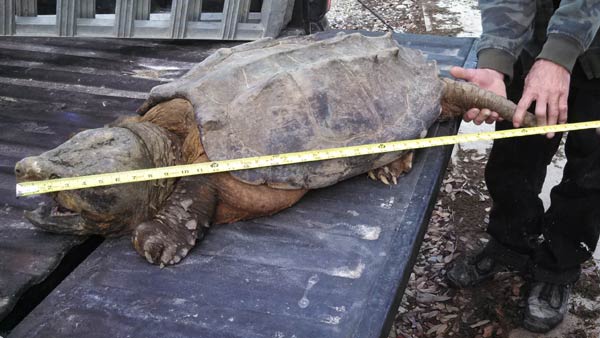
Read the story at KPTV.com.
This image of an Emerald Tree Boa, uploaded by kingsnake.com user snakedawg81, is our herp photo of the day!
-med.JPG)
Upload your own reptile and amphibian photos photos at gallery.kingsnake.com, and you could see them featured here!
Sunday, April 13 2014
Are poachers stealing and selling the golden lancehead pit viper ( Bothrops insularis) from an island off the coast of Brazil?
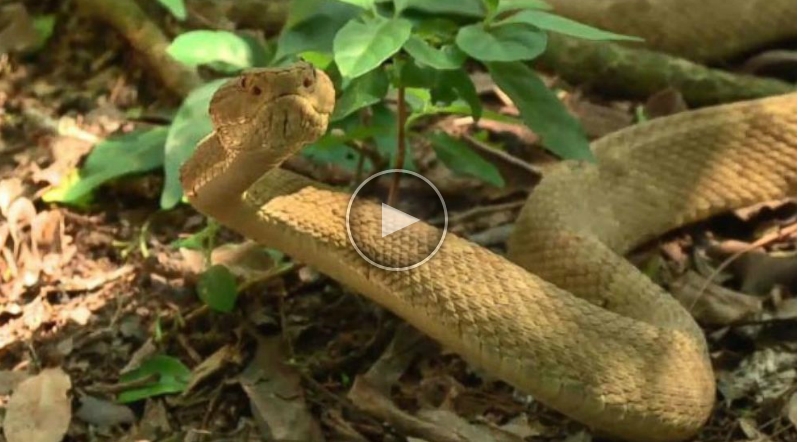
That was the topic of last night's Nightline Prime:
One poisonous bite from the Golden Lancehead pit viper is enough to kill a grown man within a few hours. It’s fast-acting venom will burn through flesh and cause its victim to bleed to death.
Rogerio Zacariotti, a researcher with the Cruzeiro Do Sul University in Brazil, travels to “Snake Island” regularly to monitor the Gloden Lancehead population. He is convinced poachers are stealing the snakes from the island and selling them on the black market.
Zacariotti allowed "Nightline Prime" to accompany him and his team on one of his research trips to "Snake Island," where ABC’s Dan Harris had some too-close encounters with the deadly snakes.
Read more and watch the video...
|



